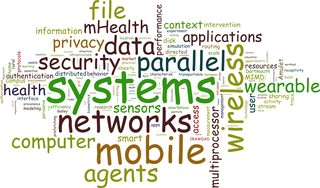The pervasiveness of sensor-rich mobile, wearable, and IoT devices has enabled researchers to passively sense various user traits and characteristics, which in turn have the potential to detect and predict different mental and behavioral health outcomes. Upon detecting or anticipating a negative outcome, the same devices can be used to deliver in-the-moment in- terventions and support to help users. One important factor that determines the effectiveness of digital health interventions is delivering them at the right time: (1) when a person needs support, i.e., at or before the onset of a negative outcome, or a psychological or contextual state that might lead to that outcome (state-of-vulnerability); and (2) when a person is able and willing to receive, process, and use the support provided (state-of-receptivity). In this dissertation, we present our work on determining when to deliver interventions by exploring and detecting both vulnerability and receptivity.
In the first part of the thesis, we discuss our work on accurate sensing and detection of different states-of-vulnerability. We start by discussing our work on advancing the field of physiological stress sensing. We took the first step towards testing the reproducibility and validity of our methods and machine-learning models for stress detection. To this end, we analyzed data from 90 participants from four independent controlled studies, using two different types of sensors, with different study protocols and research goals. We evaluated new methods to improve the performance of stress-detection models and found that our methods led to a consistent increase in performance across all studies, irrespective of the device type, sensor type, or the type of stressor. Our thorough exploration of reproducibility in a controlled environment provides a critical foundation for deeper study of such methods, and is a prerequisite for tackling reproducibility in free-living conditions.
Next, we present our work on detecting at-risk indicators for patients undergoing Opioid Use Disorder (OUD) treatment. We conducted a 12-week study with 59 patients undergoing an OUD treatment and collected sensor data, like location, physical activity, sleep, and heart rate, from smartphones and wearables. We used the data collected to formulate low- level contextual features and high-level behavioral features and explored the feasibility of detecting self-reported stress, craving, and mood of the participants. Our results show that adaptive, personalized models can detect different at-risk behaviors with the area under the receiver operating characteristic (AUROC) values of up to 0.85.
In the second part of this dissertation, we discuss our contributions in the domain of state-of-receptivity for digital health interventions. We start by conducting a study with 189 participants in Switzerland to explore participant receptivity towards actual physical activity behavior change interventions and report novel and significant results, e.g., being more receptive to interventions leads to higher goal completion likelihood. We further built machine-learning models to predict state-of-receptivity and deployed those models in a real-world study with participants in the United States to evaluate their effectiveness. Our results show that participants were more receptive to interventions delivered at moments detected as ‘receptive’ by our models.
In addition to receptivity in daily living conditions, we explored how participants interact with affective health interventions while driving. We analyzed longitudinal data from 10 participants driving in their day-to-day lives for two months. In this exploratory work, we found that several high-level trip factors (traffic flow, trip length, and vehicle occupancy) and in-the-moment factors (road type, average speed, and braking behavior) showed significant associations with the participant’s decision to start or cancel an intervention. Based on our analysis, we provide solid recommendations on delivering interventions to maximize responsiveness and effectiveness and minimize the burden on the drivers.
Overall, this dissertation makes significant contributions to the respective sub-fields by addressing fundamental challenges, advancing the current state-of-the-art, and contribut- ing new knowledge, thereby laying a solid foundation for designing, implementing, and delivering future digital health interventions.

